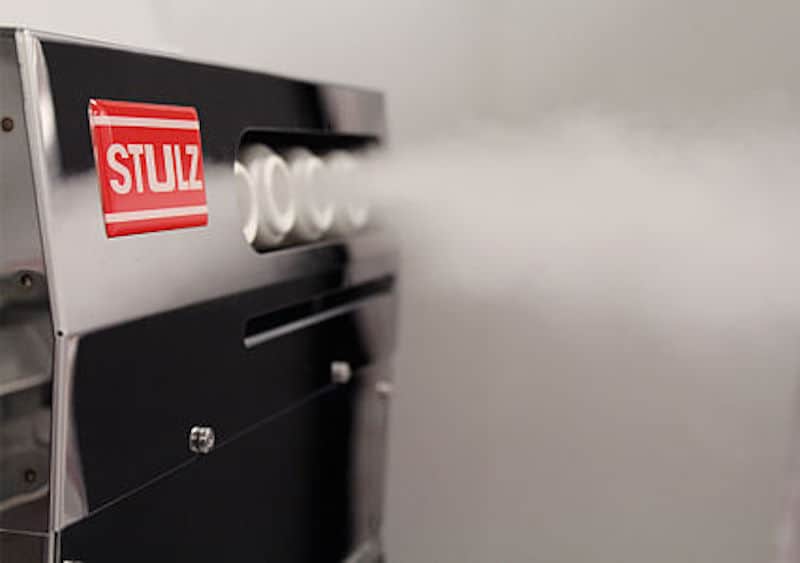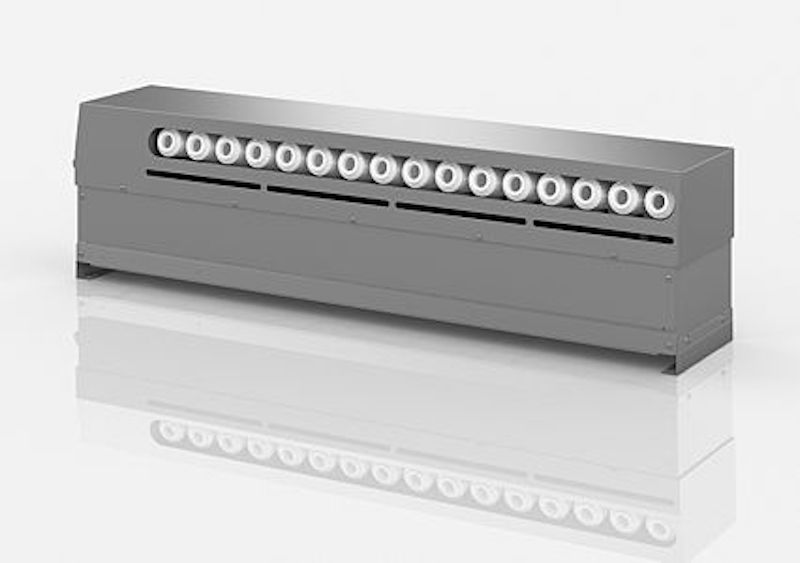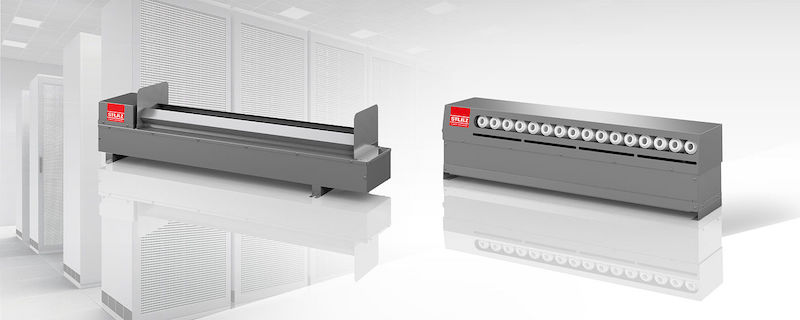
You may never have heard of Ultrasonic Humidification, but rest assured, it’s here to stay.
Cooling an office space is now something we all accept as the norm. Few newly developed office spaces would even consider coming to market without air conditioning throughout. But, whilst air conditioning keeps us cool and filters the air to remove some harmful particulates, such as exhaust fumes and smoke within city locations, it also reduces the humidity. Low humidity work environments will dry your skin out and contribute towards eye irritations.
The answer is to add an additional layer of humidification to balance the drying or dehumidifying effect of the air conditioning. Looking back at the history of air conditioning, the cooling effect was created by passing air over ice.

With a conventional system, this humidification is delivered as vapourised water in the form of steam. The obvious problem with steam is that by definition, it is hot – 100 degrees centigrade or more. Adding heat to a system designed to cool is completely counterintuitive as it’s so obviously inefficient. The more steam you add to humidify the space, the harder the cooling system has to work to bring the temperature back within range and the greater the dehumidifying effect.
But when you apply the same principle to a Data centre, the issue becomes far more critical.
Within a data centre, sensitive computer equipment operates optimally at ambient temperatures between 20-24 degrees. This range also allows a sensible buffer in case of any issues within the system. If the temperature gets above 30 degrees then critical equipment can begin to be at risk of shutdown. This is why, when we install cooling systems for data centres, we have temperature and humidity sensors at differing heights and along the full length of an aisle. It allows the system to balance and ensure the servers continue to operate optimally.

But for data centres, humidity is every bit as critical as temperature. It needs to be maintained at a level between 45% and 55%. Early warning systems are designed in to be triggered at 40% and 60% humidity. This becomes critical at levels of 30% on the low side and 70% on the high side where systems need to be shut down to protect themselves from damage.
If humidity levels are too high, condensation will form, which could result in corrosion within the IT hardware and the potential for early system and component failure. On the other hand, low humidity can cause static within the environment and the equipment becomes at risk of electrostatic discharge, which can again cause component or system failure.
As we have established above, temperature and humidity control are critical within a data centre. With large arrays of cooling and humidification equipment deployed, running costs can be very high. Therefore, any system efficiencies could deliver exceptional cost savings. With steam delivered by conventional humidification combined with the heat from the IT equipment, the cooling system has to work harder to bring the temperature back within range. With ultrasonic humidification, the benefits of vapour being added without the additional heat are obvious. The cooling system only has to manage the thermal gain from the computers and as such, operates at peak efficiency.

The description from Wikipedia describes it perfectly.
‘An ultrasonic humidifier uses a ceramic diaphragm vibrating at an ultrasonic frequency to create water droplets that exit the humidifier in the form of cool fog.
Ultrasonic humidifiers use a piezoelectric transducer to create a high frequency mechanical oscillation in a film of water. This forms an extremely fine mist of droplets about one micron in diameter, that is quickly evaporated into the air flow.’
So rather than heat the water to create steam, the water is literally shattered by the ultrasonic waves into tiny water particles.
Conventional humidifiers boil water to put steam into the system. The boiling of the water purifies it and kills most potential pathogens. With ultrasonic humidification however they rely on de-ionised water to ensure minerals and also potential pathogens from ‘dirty’ water are not dispersed with the vapour.
The de-ionised water comes from a water purification system made up from a reverse osmosis system combined with additional filtration. Reverse Osmosis will typically remove 90-99% of most contaminants. The secondary carbon filtration then removes most of the rest, to deliver pure water. Once treated, this water must be kept clean and is sometimes then passed through an additional UV light irradiation treatment to maintain its cleanliness, prior to being passed through the Ultrasonic Humidifier without the risk of dispersing contaminants.
In simple terms the big idea is energy saving.
On average, Ultrasonic Humidification will save over 90% in energy costs, when compared to conventional steam generation.
With a back to back comparison, the equivalent steam generator would consume 8kW of power, compared to a midrange model Stulz 2000A Ultrasonic Humidifier that only consumes 180W. A saving of nearly 98%.
On top of this, Ultrasonic Humidifiers take very little servicing. The boiler unit within a conventional steam generator may need replacing every 3 months or so, whereas the life expectancy – without major intervention – of an Ultrasonic Humidifier can run into many years.
So it makes huge sense for both the financial and maintenance savings it delivers. In a reasonable sized data centre, the savings can be up to £40,000 per year in energy costs alone.
Desktop ultrasonic humidifiers are a popular accessory within offices today and the benefits to the user are clear. Commercial systems are however less common, despite the obvious commercial benefits.
The Kimpton team have real expertise in commercial applications of Ultrasonic Humidification within data centres and conventional office and retail spaces.
We believe there will be a marked shift towards these more environmentally efficient systems in the coming years and our team would be happy to discuss potential savings and create an ongoing planned and preventative maintenance programme to ensure they continue to deliver peak efficiencies for many years to come.
If you would like to discuss any of our services, please call 0151 343 1963 or complete the form below and we will be in touch shortly.